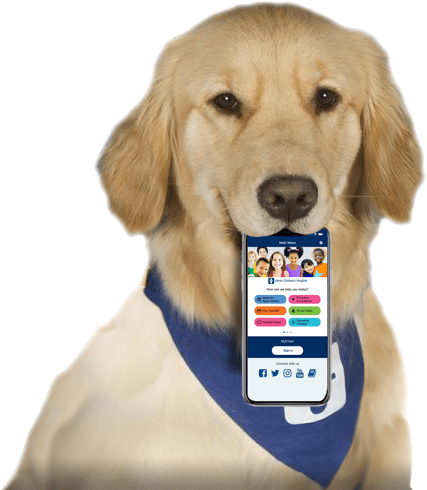Polio
What Is Polio?
Polio is an infection caused by a virus, called the poliovirus. It was once very common in the U.S. and feared, because it caused paralysis and could be deadly. After doctors started giving a polio vaccine in the 1950s, the number of cases quickly fell.
Polio is still a problem in parts of Asia and Africa. Although it is very rare in the U.S. , it can still happen, especially in people who didn't get the polio vaccine.
What Are the Signs & Symptoms of Polio?
Most people who get infected with polio (short for poliomyelitis) have no symptoms.
Some people have only mild flu-like symptoms, so they may not even suspect that they have polio. These symptoms can include:
- upper respiratory infection (feels like a cold)
- sore throat
- fever
- diarrhea
- nausea and vomiting
- stomach pain
- headache
- general feeling of being sick
Rarely, the virus affects the brain and spinal cord, causing much more serious symptoms, such as:
- Meningitis. The polio virus can infect the meninges, which are the membranes around the brain and spinal cord. This causes a severe headache, a stiff neck, and sensitivity to light (when light hurts or bothers the eyes).
- Muscle weakness or paralysis. The virus can destroy the nerve cells that control muscles. When this happens, the muscles get painful and weaker until they stop working. When a person can't use their muscles, their body becomes floppy and can't move — known as paralysis. This can be life-threatening if it affects the breathing muscles and a person can't breathe.
Is Polio Contagious?
Polio is very contagious. The virus enters the body through the mouth and grows in the throat and intestines. It then spreads to other people via saliva (spit) or feces (poop). People can come into contact with the virus when:
- They have direct contact with the poop of an infected person, or touch an object contaminated with the poop.
- An infected person coughs or sneezes on them.
- They eat foods or drink liquids contaminated with the virus. This can happen if they share food or utensils with an infected person. It also can happen if sewage water contaminates the food or drink.
An infected person can have the virus in their throat for 1–2 weeks, and in their poop for up to 6 weeks or longer. Even someone who has no symptoms can pass the virus to other people.
How Is Polio Treated?
There is no cure for polio, only treatments to manage symptoms. Mild cases usually are treated with plenty of fluids and bed rest.
Someone who has muscle pain or weakness will get medicine to treat the pain, and physical therapy to keep the muscles moving. If their breathing muscles are affected, they might need help from a mechanical ventilator (breathing machine). The ventilator moves air in and out of the lungs until the person can do it on their own.
How Long Does Polio Last?
People who have milder polio symptoms usually make a full recovery within 1–2 weeks. People whose symptoms are more severe can be weak or paralyzed for life, and some may die.
After recovery, a few people might develop "post-polio syndrome" as long as 30–40 years after their initial illness. Over time, they develop pain or weakness in their muscles or joints, and might feel very tired.
Can Polio Be Prevented?
Polio is a preventable disease. The best way to protect children is to make sure they get a polio vaccine. The vaccine makes the infection-fighting immune system create antibodies against the virus. The antibodies will fight the virus if it ever enters the body.
Inactivated Poliovirus Vaccine (IPV)
In the U.S., kids get the inactivated poliovirus vaccine (IPV) when they're 2 months, 4 months, 6–18 months, and 4–6 years old. IPV contains an inactive form of the virus, so it can't cause polio.
Oral Polio Vaccine (OPV)
In other parts of the world, kids might get oral polio vaccine (OPV), which contains a weak form of the live virus. This liquid vaccine is cheaper and easier to give to many people. Because it's not an injection, it doesn't have to be given by a trained health care provider.
OPV will be in the spit and poop of those who get the vaccine. So it can spread to other people the same way the virus does. If it spreads to someone who isn't vaccinated, it can trigger that person's immune system to create antibodies. They'll be immunized even though they didn't get the vaccine directly.
OPV can, very rarely, cause polio because it contains the weak live virus. Generally, this only happens if the weak virus spreads for a long time in a community and has the chance to mutate (change) into a stronger version. That's why OPV is no longer used in the U.S.
OPV doses given before April 2016 can count toward a child's U.S. polio vaccination requirements. Doses given after that do not count.
What Else Should I Know?
Health groups working to wipe out polio around the world have had much success. But several countries still have polio. And in countries where polio doesn’t usually spread, an unvaccinated person can become infected if they're exposed to someone who got OPV. Then, they can then spread the virus to others. So it's very important for kids to get all recommended doses of the polio vaccine.
Most adults in the U.S. were vaccinated as children and don't need to get vaccinated again. But some might get a one-time booster dose if they're at risk for exposure to polio. This can be the case for vaccinated adults who:
- plan to travel to an area where there is a high risk of catching polio
- work in a lab with polioviruses
- work in a health care setting with patients who have polio or have traveled to areas where polio is spreading
- have close contact at home with someone who has polio or are around a child who got or will get OPV
If you plan to travel outside the U.S., particularly to Africa and Asia, be sure that you and your kids have gotten all your needed polio vaccinations.
Talk to your doctor if you aren’t sure whether you got the polio vaccine as a child or have any questions about it.
Reviewed by: Elana Pearl Ben-Joseph, MD
Date Reviewed: Sep 10, 2022
















